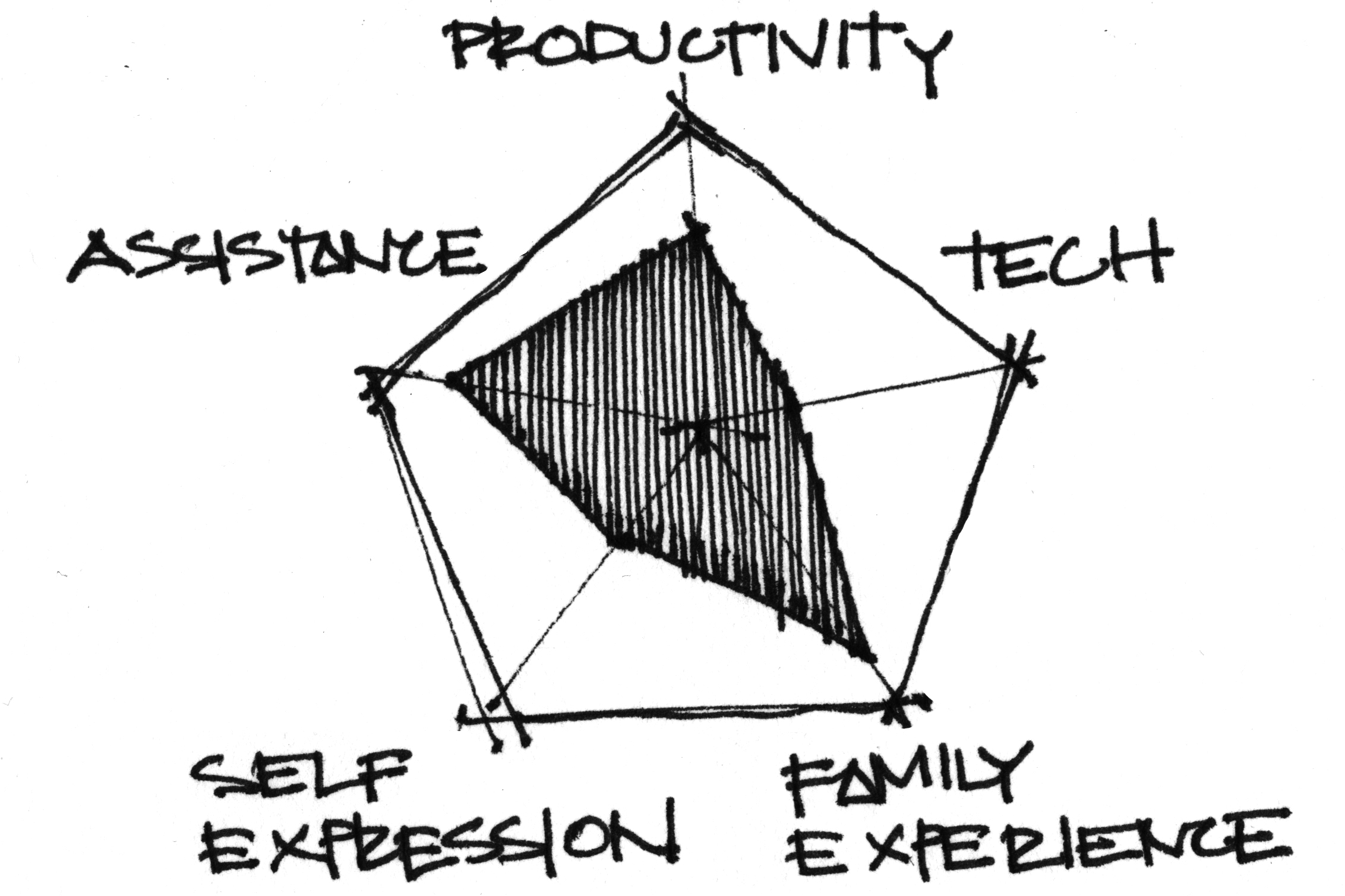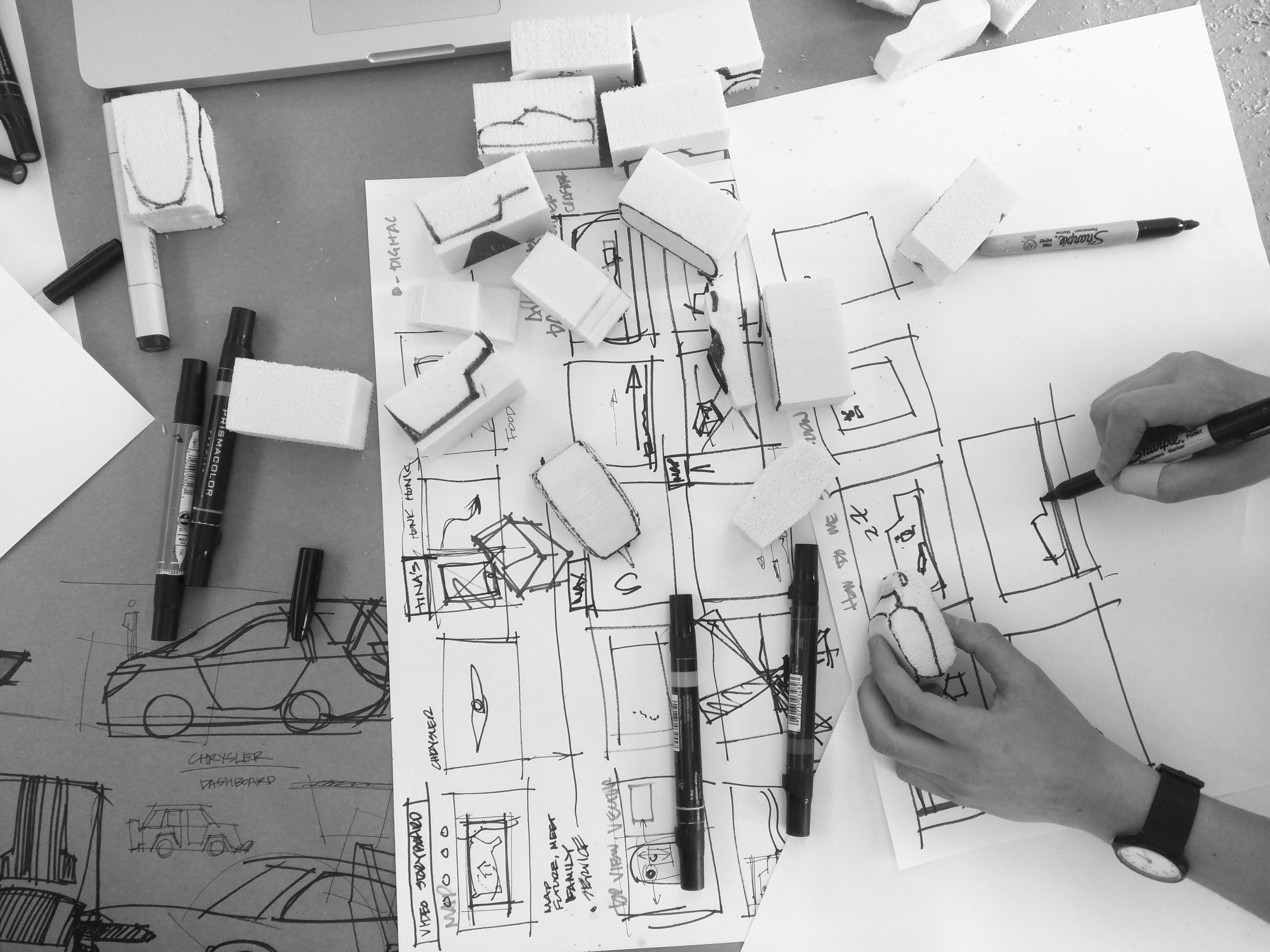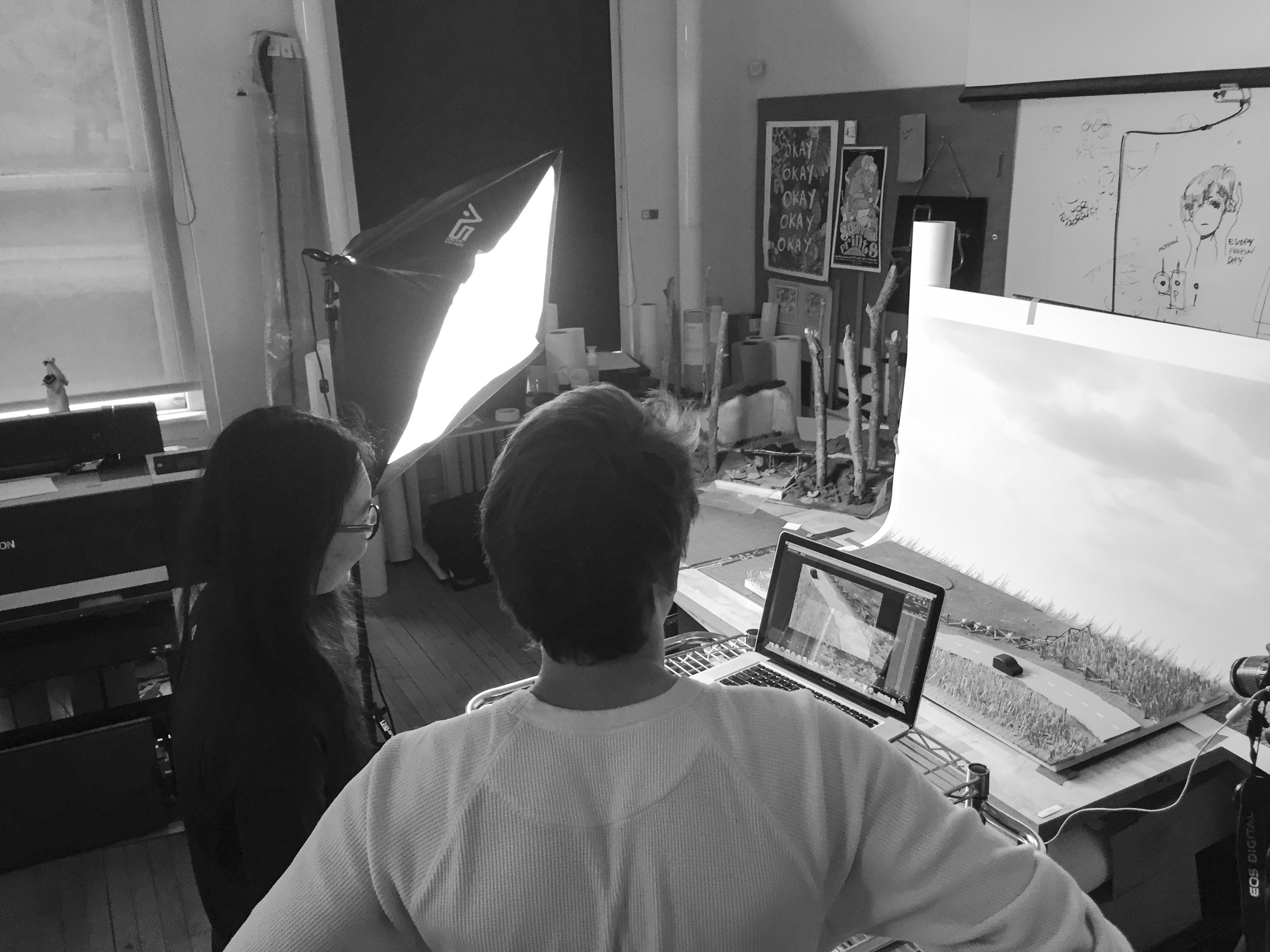The Future of Vehicles
Design Research, Storytelling, User Experience • What are the cultural implications of self-driving cars, and how do brands apply in this future?
I realized a future of autonomous vehicles for Fiat Chrysler Automobiles (FCA) with Tina Park and Adella Guo. Through four months of research, discussion, and creation, we illustrated a world in which autonomous technology afforded FCA a new opportunity for a temporary ownership service. Throughout the semester we explored themes such as the role of consumer preference, service design, and technology as a catalyst for change in behavior. Our pitch is a service built to enhance the experience of the user while simultaneously adapting FCA to the dynamic and ephemeral ownership model of the future.
Phase I: Understanding the Future
We began our process identifying parties with vested interest in the future of autonomous vehicles. After some conversation, it became obvious this new tech could easily produce a paradigm shift in which society as a whole is a stakeholder. To make the problem space more manageable, we reduced relevant parties and ranked them heirarchically in a way that would help us focus on more specific issues.
After piecing together an understanding using secondary research and stakeholder mapping, we used workshops and interviews to guage millennial values and cross referenced these findings against broader data to form an in-depth understanding of how the young community views ownership of automobiles. It quickly became clear that autonomous driving technology would be a catalyst, accelerating the rate of development in the industry and therefore making adaptability an integral part of any car design and manufacture practice.
Research methods included asking participants to draw their own ideal cars of the future. Here, we gained a key insight: people want their ideal vehicles to be highly personalized to reflect individual taste.
Phase II: Finding FCA's Place
To find FCA's position in the future we began to reveal with our research, we created affinity maps to meld together our insights with our research. These maps were messy, but the conversations they facilitated greatly aided us moving forward. We quickly realized that FCA's opportunity was to take advantage of the coming cultural shift self-driving cars will produce.
We discovered people are willing to sacrifice the identity that comes with ownership for the sake of the convenience that comes with sharing resources. This trend is bad news for a business in manufacturing, such as FCA, because hardware and form will become less significant relative to user experience. To better position FCA within this new paradigm, we pitched the idea to FCA of a brand lease system, taking the best of brand identity and making it possible within the sharing economy model.
Phase III: Telling the Story
What kind of scenario, setting, and user is most appropriate to showcase the individuality of each of these brands? We explored the user personas of different family members to highlight the strengths of Chrysler, Dodge, and Jeep.
Chrysler
Avi Watson appreciates anything that can reduce her work and give her time to focus on her family. Leasing a Chrysler is like having another pair of hands around the house.
Dodge
Tom Watson believes a car should be an expression of his own identity. He's excited about what autonomy has to offer and is always keeping an eye on the newest innovations in the field. Tom loves the thrill of Dodge because it represents advancements in tech and lifestyle.
Jeep
Lena and Patrick Watson are all about play. They love to learn and make memories as individuals and as a family. Jeep helps the kids explore the world beyond books and movies and takes them to experience reality in a new way.
Phase IV: Production
We chose to tell our story using stop-motion because it invites playful thinking without too much promise of resolved detail. Our pitch needed to be optimistic and high-level, telling about what could be rather than telling a more fatalistic story.






























